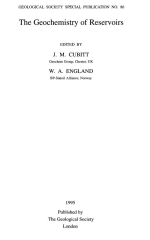Добрый день, Коллеги. Важное сообщение, просьба принять участие. Музей Ферсмана ищет помощь для реставрационных работ в помещении. Подробности по ссылке
The geochemistry of reservoirs / Геохимия резервуаров
We believe this is the first collection of papers to be devoted entirely to reservoir geochemistry, which is an area of growing scientific and economic importance. The main aim of reservoir geochemistry is to understand the distributions and origin(s) of the petroleums, waters and minerals in the reservoir and account for their possible spatial and compositional variation. This is ideally related to basin history and location of source-rock kitchens and migration pathways.
As well as being of interest in its own right, reservoir geochemistry has many important practical applications during petroleum exploration, appraisal and development. The most important uses are related to proving or disproving connectivity between different regions of a particular well or horizon. During exploration, reservoir geochemistry can indicate the direction from which a field filled, pointing the way for future wells. During production, studies of variations in composition with time may also be made, although this is a little studied area at present.
Published accounts of the origins and applications of reservoir fluid differences appear to be relatively recent. England et al. (1987) noted the phenomenon and were probably the first to relate it to migration and subsequent time-scales of inreservoir mixing. Workers, particularly in the USA, have developed the use of 'gas chromatography (GC) fingerprinting' to distinguish different oil families, often in reservoirs with numerous thin hydrocarbon-bearing intervals (Kaufman et al. 1990). Effects due to the Earth's gravitational field were first considered by Sage & Lacey (1939). An extensive bibliography is presented by Larter & Aplin (this volume). <...>




